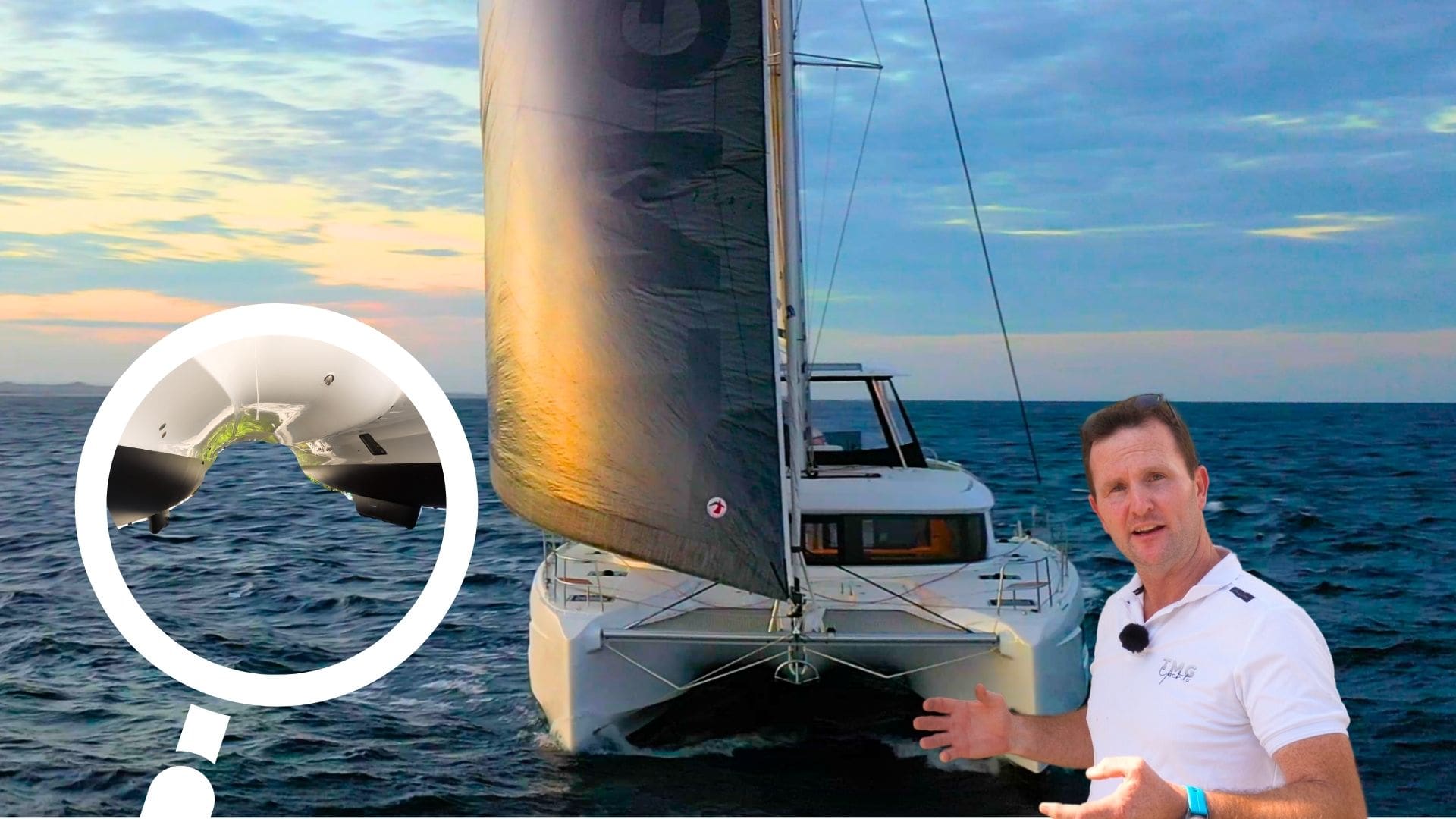How to Trim Upwind – Basic Sailing Techniques
Inspire & Learn – Back to Basics
In this blog, we will look at how to trim your sails when sailing upwind. Sailing upwind is classified as sailing at any angle lower than 90 degrees to the wind. Sailing directly into the wind is not possible; therefore, to sail in the direction of the wind, you must continuously tack in a zig zagging motion.
The most efficient way to trim your sails when tacking upwind is to have them close hauled. This means pulling them as close to the centerline of the boat as possible. This will allow you to point higher and therefore get to your destination faster.
Whether you are pointing 90 degrees or 45 degrees to the wind, this blog will be helpful in demonstrating how to use your vessel’s instruments to improve the trim and get the most speed out of your boat.
This video and blog demonstrations were produced onboard a Lagoon 42 sailing catamaran but can be used on any sailing vessel.

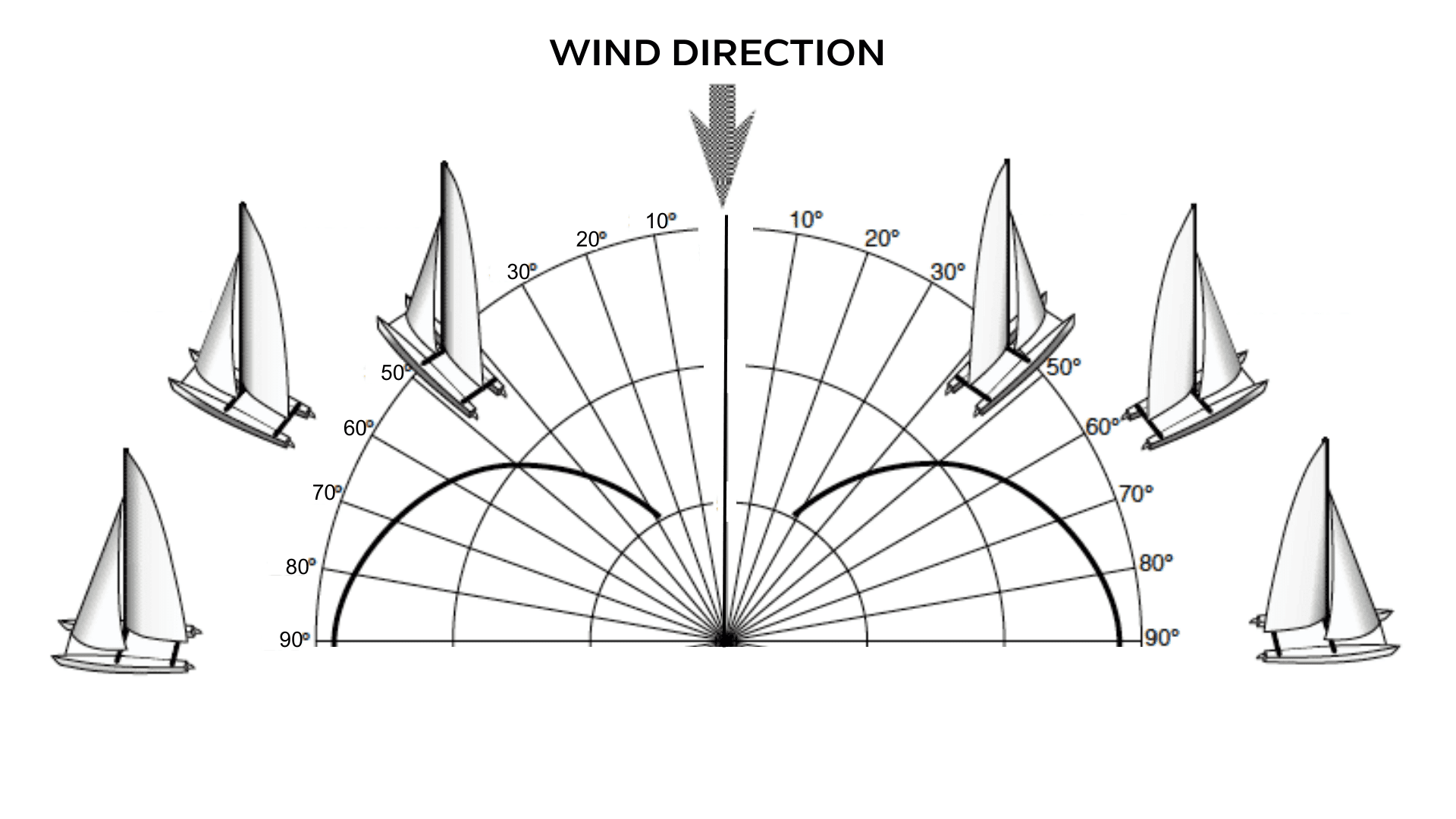
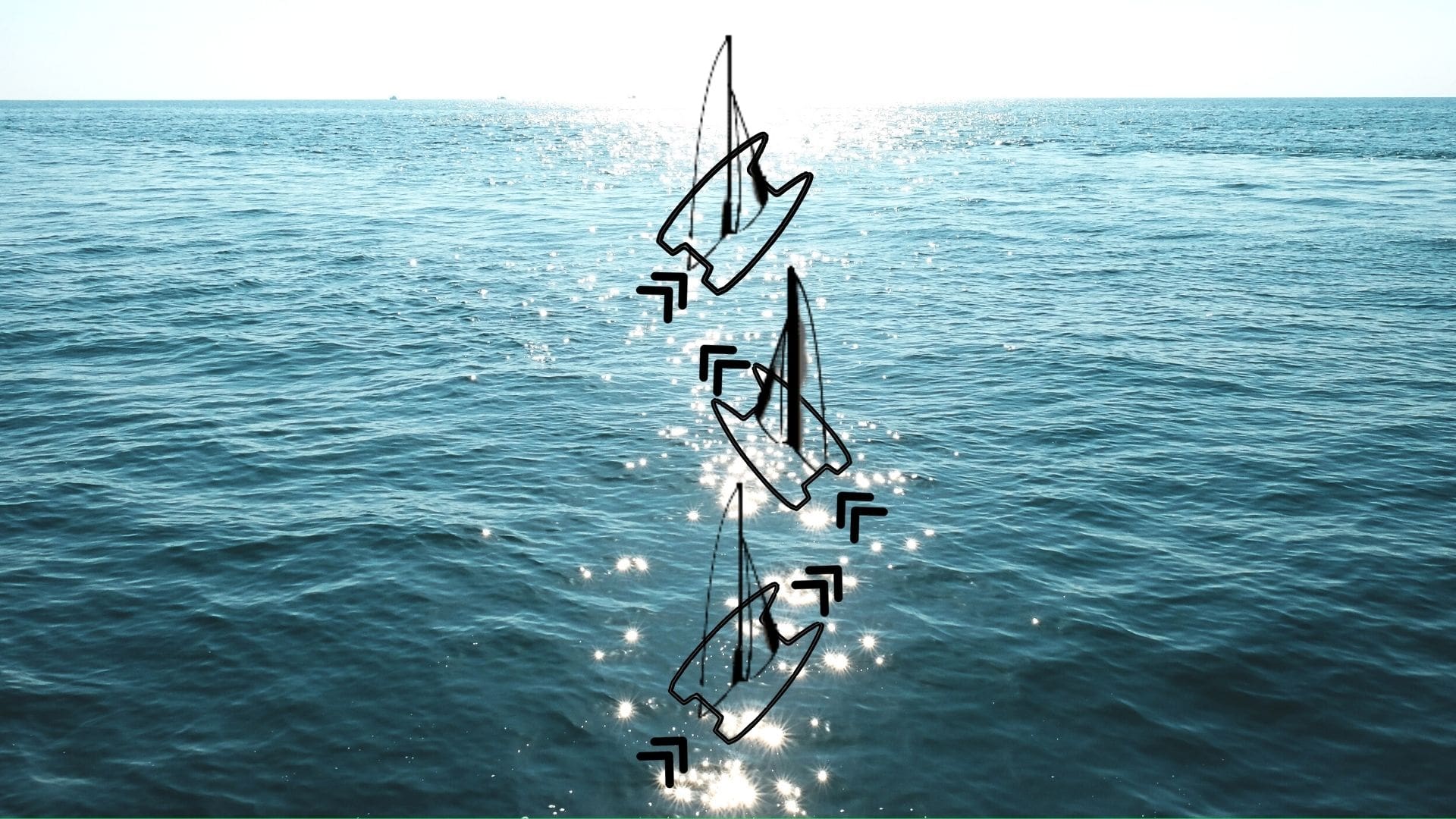
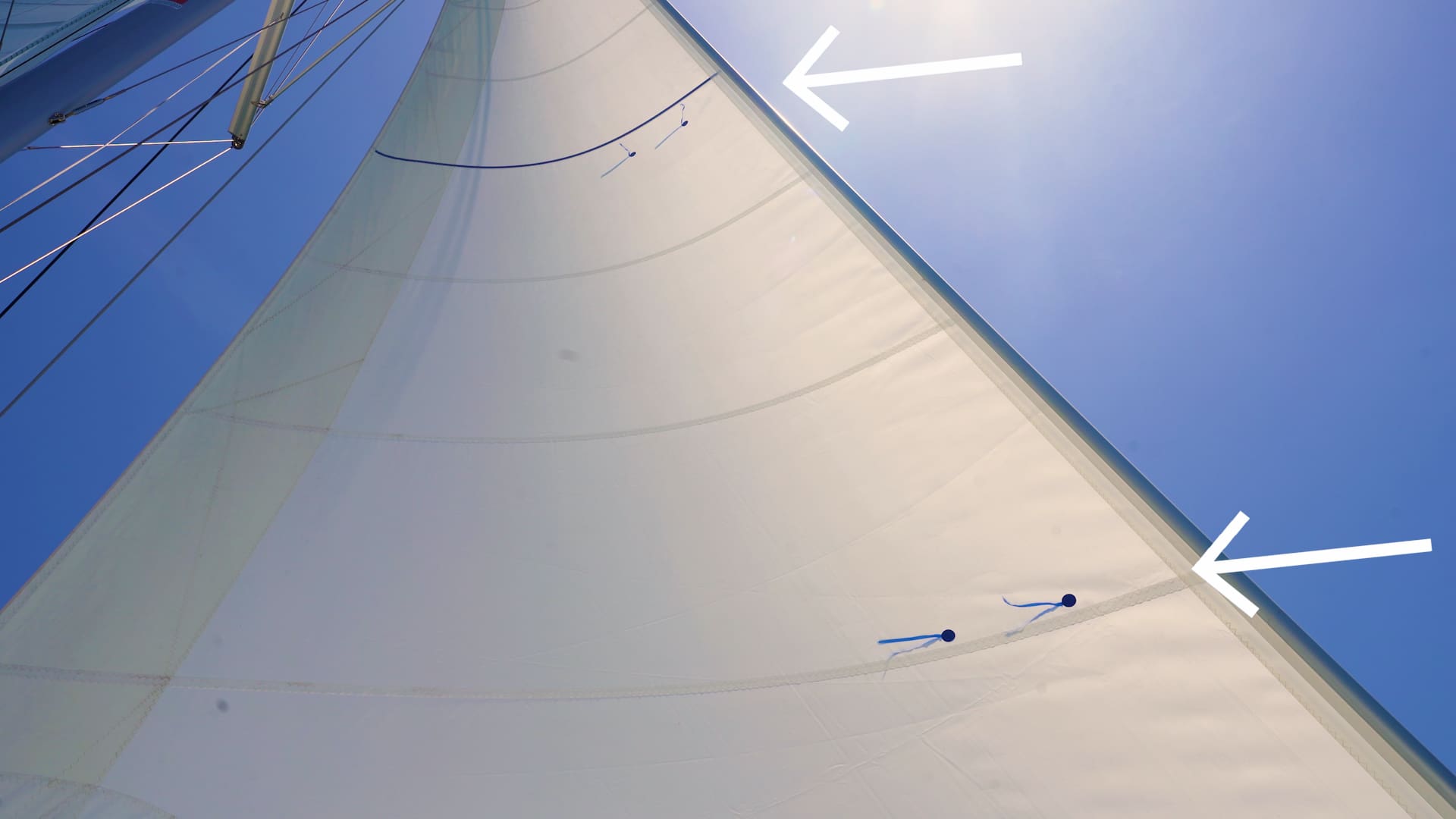
TELLTALES
Learning how to trim your sail is a crucial skill for any sailor. Luckily, there are some useful instruments that can help make the task a bit easier. These instruments, called telltails, are ribbons attached to the sail that indicate airflow over the front and back sides. Ideally, you want the telltails to be in a linear motion, indicating a smooth airflow around both sides of the sail. If they are not, it means the sail is inefficient and needs to be adjusted.
JIB/ GENOA
- If the sails are let out too far: the telltale on the inside or windward side (the side facing the wind) will flap. If the inside telltale is flapping you need to pull the sail tighter.
- If the sails are too tight: the telltale on the outside or downside side (the side facing away from the wind) will flap. If the outside telltale is flapping you need to let off the sail.
A simple way to remember this is that when you are sailing upwind you want to bring the sail towards the flapping telltale.
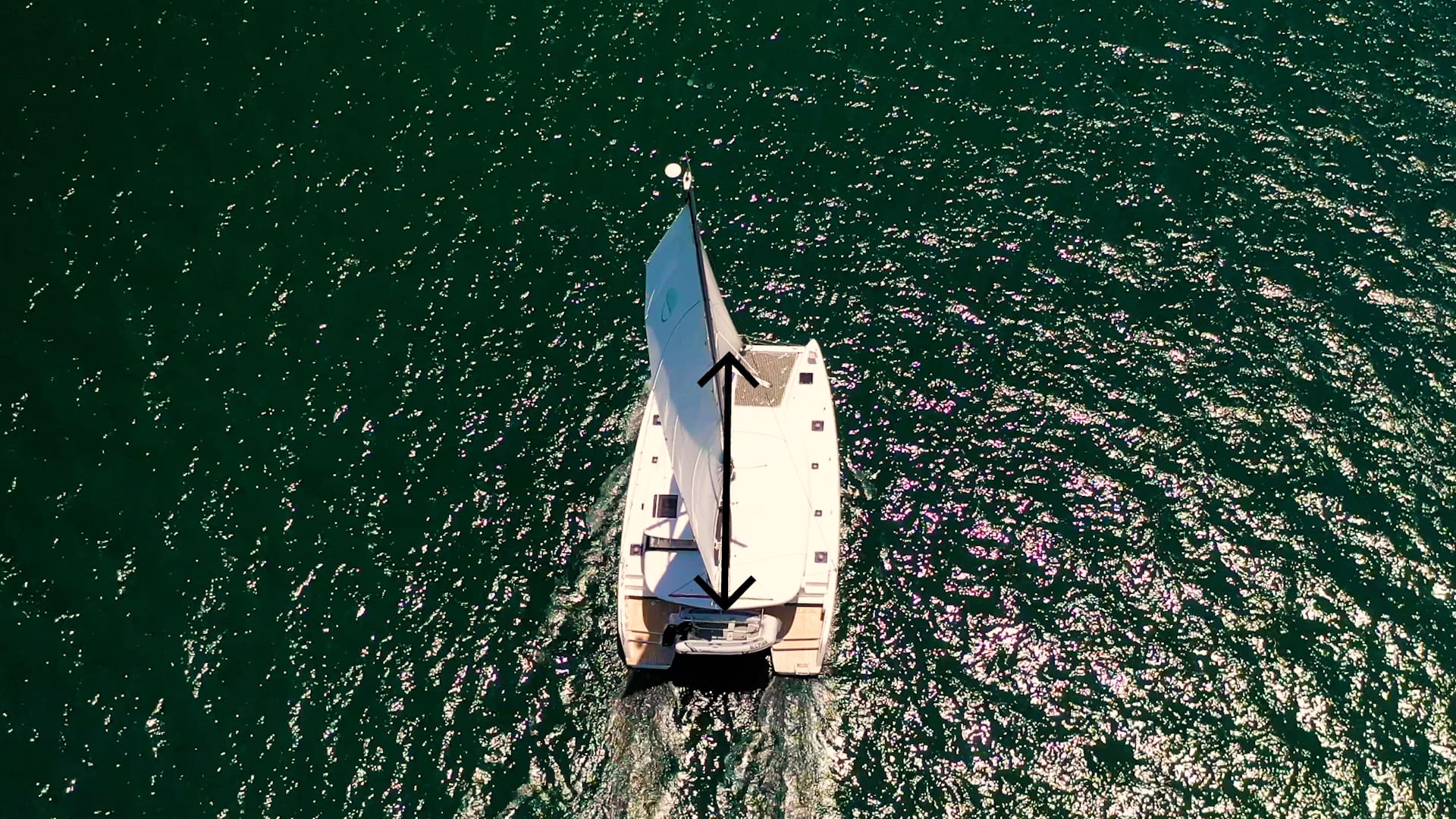

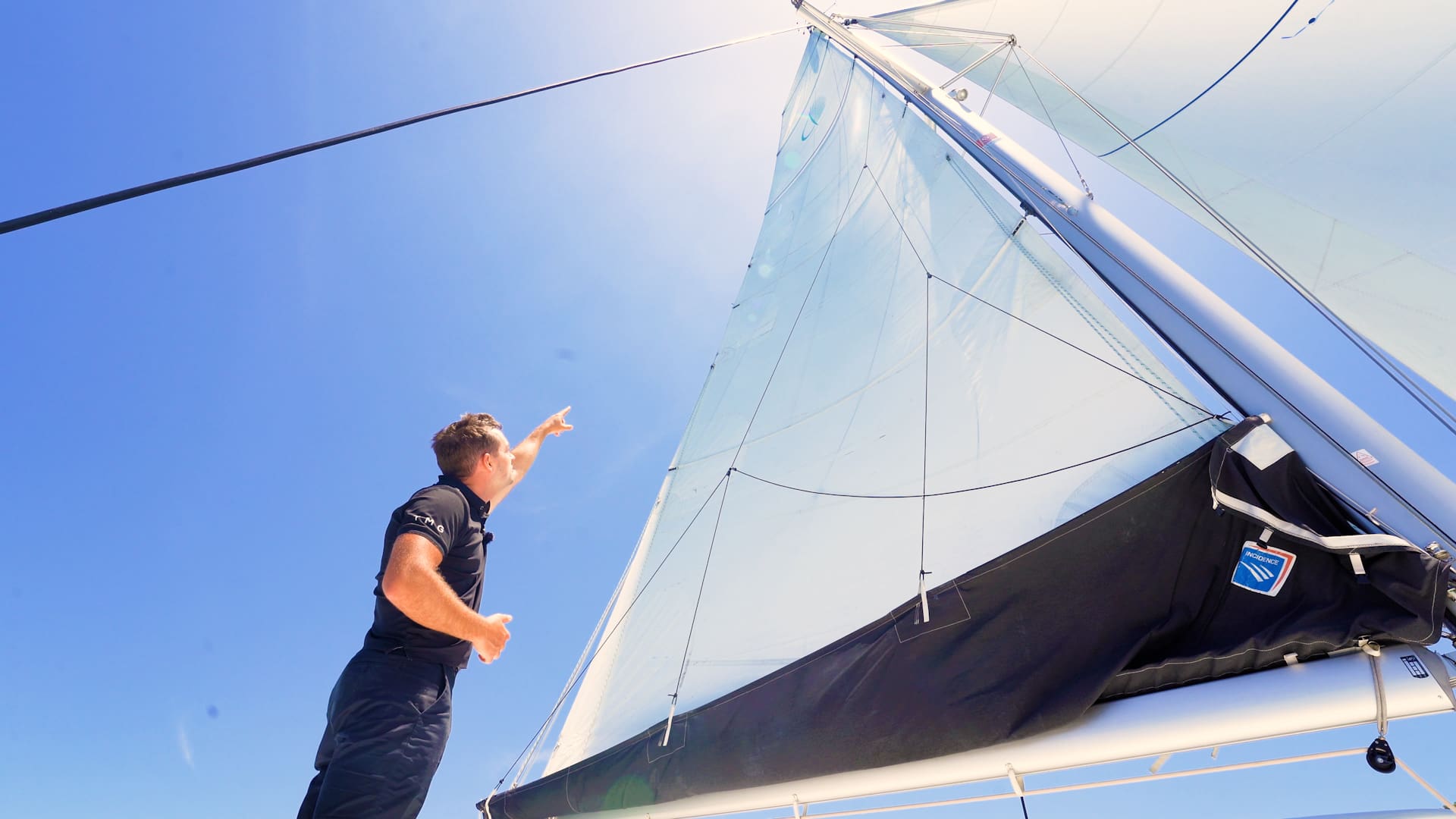
SELF TACKING STOP CAR
The stop car for the self-tacking jib on the Lagoon 42 in the demonstration is a useful tool for adjusting the jib’s position on the sliding track. When sailing upwind, you can manually adjust the stop block to pull the jib closer to the centerline of the boat, improving the trim efficiency. You need to set it up before tacking.
MAINSAIL
The mainsail is the largest sail and is essentially the engine for the boat, therefore, ensuring that this sail is maximising the wind is imperative to increase speed.
- If the mainsail is pulled on too tight: The telltales will wrap around the back of the sail, indicating that the airflow over the sail is not smooth, resulting in inefficient airflow over the back edge of the sail.
- If the mainsail is too loose: The telltales will be playing around on the windward side of the sail or the luff (the area closest to the boom) of the mainsail) will flap, indicating the sail is not being filled efficiently.
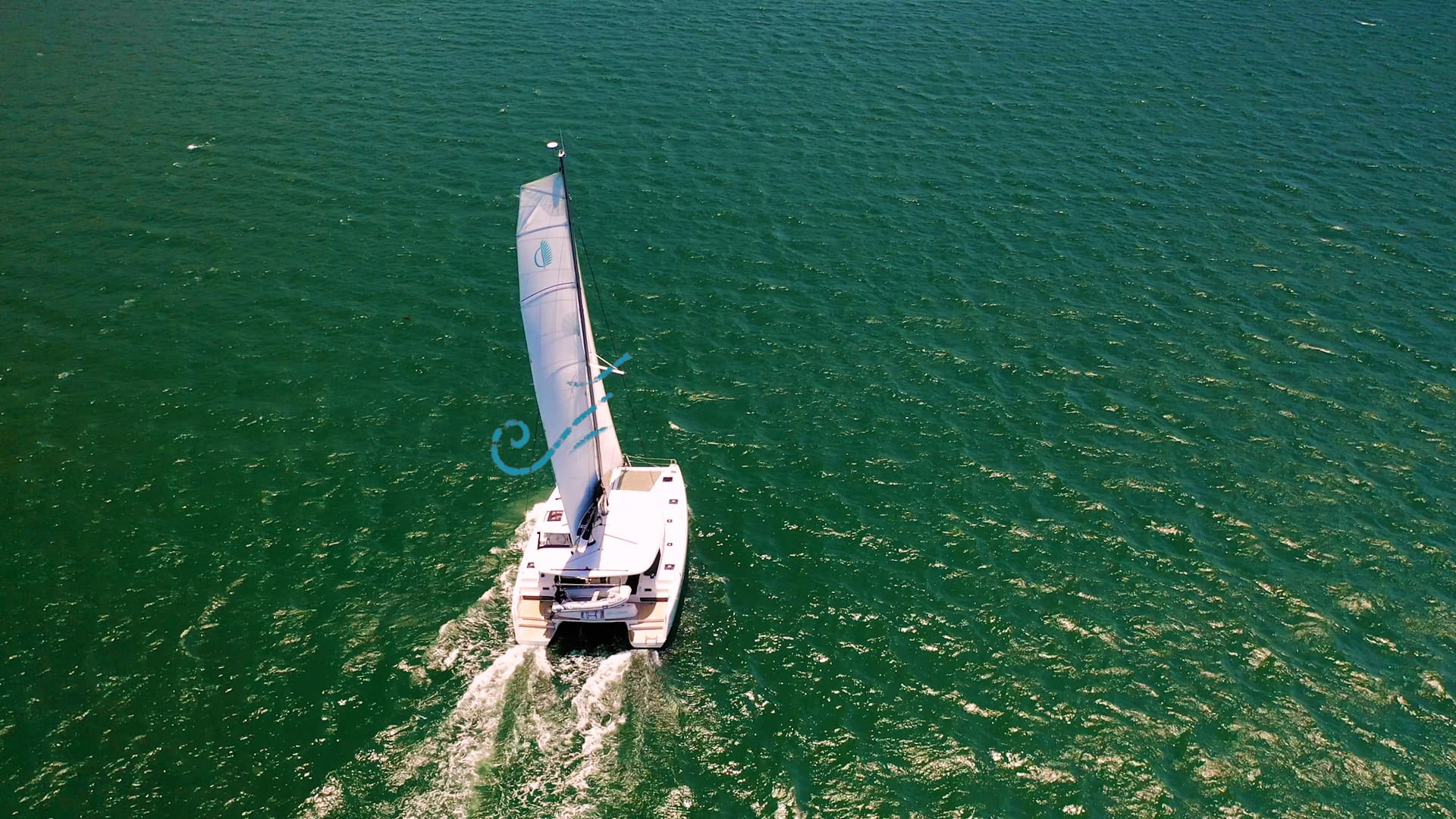
LATEST FROM THE INSPIRE AND LEARN SERIES
How to Fly a Code Zero on a Catamaran
In this guide, we delve into the intricacies of flying a Code Zero on a catamaran, specifically the Lagoon 46. Join our expert, Joe Fox, as he walks you through the setup, preparation, and manoeuvres involved in harnessing the power of this versatile sail.
Guide to Hull Maintenance & A Detailed Look Below the Surface
In this instructional piece, we delve beneath the waves to explore the underwater profile of the a Lagoon Catamaran. Join us as we dissect the key features and maintenance points of the Lagoon 46, offering insights into what to look for during routine upkeep.
Lagoon Catamarans’ NEW Furling Boom System – Inspire & Learn Technical Feature
We’re excited to introduce you to a groundbreaking development in the world of catamarans – Lagoon Catamarans’ new Furling Boom System. This video and blog will delve into the details of this exciting development, featuring an interview with the mastermind behind the project, Bruno Belmont, Lagoon Catamarans’ multihull expert, as well as an exclusive first look with Joe Fox from TMG.


